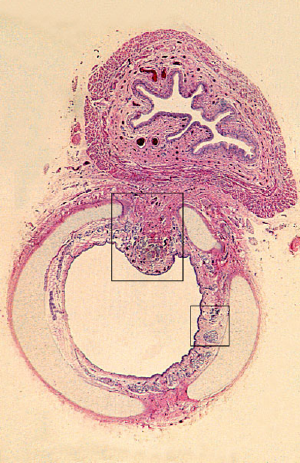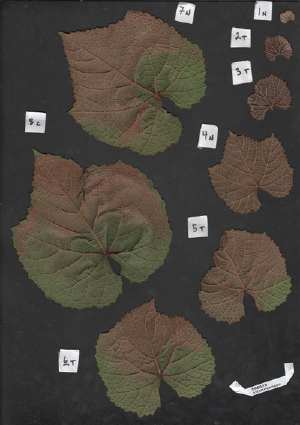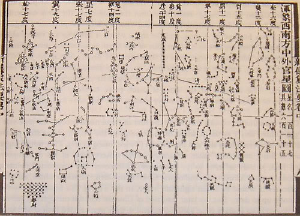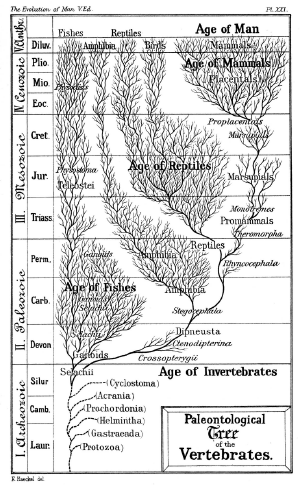No edit summary |
No edit summary |
||
| Line 167: | Line 167: | ||
==Participants== | ==Participants== | ||
* [[ | * [[/Andre Faupel|Andre]] | ||
* [[ | * [[/Francis/]] | ||
* [[ | * [[/Maria Degand|Maria]] | ||
* [[ | * [[/Steffen|Steffen]] | ||
* [[ | * [[/Rama/]] | ||
* [[ | * [[/Benjamin/]] | ||
* [[ | * [[/Meike/]] | ||
[[Category:SS15]] | [[Category:SS15]] | ||
Latest revision as of 18:13, 4 February 2019
eval(nature)
Projektmodul
Lehrpersonen: Ursula Damm, Darsha Hewitt, Martin Schneider
Bewertung: 18 ECTS, 16 SWS
Termin: Donnerstag, 09.15 - 12:30 Uhr
Ort: Marienstraße 7b, Raum 204
Erster Termin: 16th April 2015
Beschreibung
Rechnen und Algorithmen sind nicht nur eine Sache für den Computer. Viele natürliche Prozesse haben eine ihnen innewohnende Logik, der wir auf die Spur kommen möchten. In spielerischen Herangehensweisen entdecken wir wie Dinge und Wesen aus unserer direkten Umgebung sich verhalten, miteinander interagieren, Materie, Signale, Energie und Informationen austauschen.
Das Projektmodul umfasst zwei Hands-on Workshops, die die praktische Einführung in das Thema ermöglichen. A Dish of Code vermittelt solide Grundlagen der Programmierung. Wir werden Algorithmen in natürliche Anordnungen überführen aber auch Computer-Programme schreiben, die mit der Natur interagieren und diese auswerten. Da wir die Natur primär mit visuellen Sensoren evaluieren, erlernen wir ganz nebenbei Grundkenntnisse der digitalen Bildverarbeitung und Bilderkennung. Hier werden die folgenden Fragen gestellt:
- Was passiert wenn wir natürliche Anordnungen als Code interpretieren und ausführen?
- Wo bietet sich die Beschreibung der Natur mit der Sprache der Informatik an, wo stellt sie sich quer?
- Wie verhalten sich hybride Systeme, welche Schnittstellen bieten sich an und welche Rolle spielt der Mensch innerhalb dieser Systeme?
A Drop of Paint zeigt am Beispiel von Wassertropfen auf Glas wie Natur sich selbst organisiert. Im Dialog mit einem Wissenschaftler beobachten wir Muster und Regeln des Experiments (Oberflächenspannung, Konzentration von löslichen Stoffen) und überführen diese in eine gestalterische Anwendung.
Im Projekt eval(nature) lernen wir historische und zeitgenössische Werke kennen, die sich mit diesem Themenfeld beschäftigen. Aus diesem Diskurs heraus entwickelt jeder Teilnehmer ein eigenes Projekt, das es zu Ende des Semesters zu präsentieren gilt.
Description
Algorithms and programs are not only working on computers. Many processes in nature follow an inherent logic that we want to unveil. In a playful setting we discover how things and beings in our immediate environment behave, interact and exchange matter, signals, energy and information.
The project module includes workshops titled "A Drop of Paint" and "A Dish of Code". In those two workshops hands-on skills in liquid and solid programming can be experienced. The first workshop (A Dish of Code) conveys solid foundations of programming. We will translate algorithms into natural arrangements, but also write computer programs, that interact with nature and evaluate it. Since we primarily evaluate nature using visual sensors, we will incidentally learn the foundations of image processing and recognition.
- What happens if we interpret natural arrangements as code and execute them
- Where does nature lend itself to a description in terms of computer science, and where does it bristle?
- How do hybrid systems work, which interfaces are available and what's the role of humans within those systems?
The workshop A Drop of Paint shows how water is organizing itself on glass surfaces. In dialog with a scientist we observe patterns and rules of the experiment and develop an aesthetic application.
In the eval(nature) discourse we follow up on those questions and get to know historic and contemporary works that cover this domain.
Each student shall develop it's own project within the theme until the end of the semester.
Language
Unterrichtssprache ist Deutsch.
Eligible Participants
Undergraduates and graduates enrolled in the faculties of:
- Media Art/Design and Media Architecture
- Visual Communication
- Product Design
- Architecture
Recommended Courses
This is a list of courses offered by the GMU, that are recommened for students taking this module:
- GMU:Bots n Plots (Martin Schneider)
- GMU:Introduction to Electronics (Darsha Hewitt)
Evaluation
- 10% Prüfungsleistung - schriftlich:
Recherche zum gewählten Thema/ zur gewählten Arbeit in Kunst und Design, Medienwissenschaft oder einer anderen Disziplin, wobei ein Werk/Thema als Referenz individuell wählbar ist. - 10% Prüfungsleistung - mündlich:
Vortrag über ein selbstgewähltes Thema in Verbindung mit dem praktischen Arbeitsvorhaben - 20% Mitarbeit im Plenum
- 60% Prüfungsleistung - Präsentation eines Werkes
Links
A Drop of Paint
Droplets
Drops of Color
- Dancing Droplets
- Stanford researchers solve the mystery of the dancing droplets
- Drip-Drop Flip-Flop
- Dancing Droplets Paper on ArXiv
Drops of Metal
- Self-fuled liquid Metal Motor
- Terminator 2 - Smart Liquid Metal on PopSci.
- Liquid Metal Transformers on ArXiv
Matter
Sound
A Dish of Code
More Info HERE
Learning Python
to be done
Data from Nature
We will sample our own surroundings,but there's also a lot of data on the internet, that we will use right away in our programming exercises.


- Educational Histology DB – Boston University
- Vitis Leaf Shape DB – Harvard University
- Inside Insides – Animated Gif Flights through Fruits and Vegetables.
- BiMed Histology DB – 20.000+ images
- Foraminifera – A Micro Fossil Database
- Butterfly Database at the Royal Museum for Central Africa
Citizen Science
- List of Citizen Science Projects on Wikipedia
- Globe at Night
- Wildtrack FIT Database (Footprint Identification Technology)
Drawing the Dots
- Image Math with SimpleCV Long Term Exposure, Background Subtraction etc.
- Videos: Ameizing, 598, Starlings decide to change Lines, Black Vultures, Wildwood Boy
Tracking the Dots
Using SimpleCV and OpenCV to identify and track objects
Connecting the Dots
Using NetworkX to identify relations between objects

- NetworkX – Python Library
- Minimum Spanning Tree
- Random Geometric Graph
Life, Coding
Classifying Nature

- Systema Naturae by Carl Linnaeus.
- Phylogenetic tree
- 1259 Butterflies and Moths by Mario Klingemann
- Automatic identification of species with neural networks
- Neural Networks for Machine Learning by Geoffrey Hinton
Literature
Books
Programming Books
- Beazley, David: Python Cookbook ISBN 978-1449340377
- Chan, Jamie: Learn Python in One Day and Learn it Well ISBN 978-1506094380
- Blum, Richard: Python Programming for Raspberry Pi ISBN 978-0789752055
- Zelle, John: Python Programming: An Introduction to Computer Science ISBN 978-1590282410
- Gries, Paul: Practical Programming: An Introduction to Computer Science Using Python 3 ISBN 978-1937785451
- Solem, Jan Erik: Programming Computer Vision with Python: Tools and algorithms for analyzing images ISBN 978-1449316549
- Ravishankar Chityala & Sridevi Pudipeddi: Image Processing and Acquisition Using Python (Chapman & Hall/CRC Mathematical and Computational Imaging Sc) ISBN 978-1466583757
- Downey, Allen B.: Think Complexity: Complexity Science and Computational Modeling ISBN 978-1449314637
- Mitchell, Melanie: Complexity: A Guided Tour ISBN 978-0199798100
Online Books
A couple of historic books
- The Power of Movement in Plants, Charles Darwin (1880) – see also: Circumnutation
- Kleksographien (1890) – see also: wikipedia:Rorschach_test#Inkblots Rohrschachtest
- Histology of medicinal plants (1916)
- Fr. Berge's Schmetterlingsbuch (1910)
